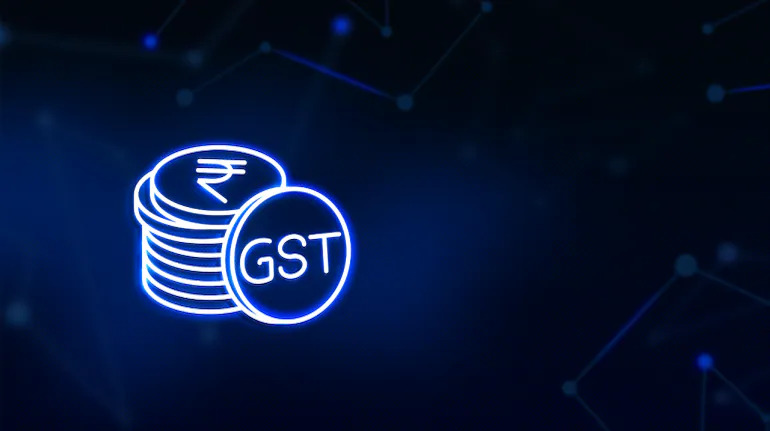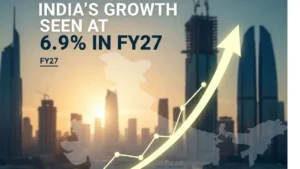India’s Gross Goods and Services Tax (GST) collections hit a 40-month low in September 2024, growing by just 6.5% to ₹1.73 lakh crore. Net GST receipts rose by 3.9%, marking the slowest growth in the current financial year. Despite this, net collections were marginally up by 1.5% compared to August. The slowdown is attributed to weaker revenue growth from domestic transactions and imports, though imports saw a growth of 8%. GST refunds surged significantly, with overall refunds rising 31% compared to a 38% rise in August.
Key Trends in GST Revenue
- Gross Revenues: Grew by 6.5% to ₹1,73,240 crore, down 1% from August 2024.
- Net Receipts: Up 3.9% compared to the previous year, reaching ₹1,52,782 crore.
- Domestic Revenues: Rose 5.9%, while growth from imports outpaced domestic collections with an 8% increase.
- Refund Growth: Overall refunds were up 31%, with domestic refunds rising 24.3% and export-related refunds surging by 39.2%.
State-wise Performance
- Top States: Maharashtra topped the chart with ₹26,369 crore, followed by Karnataka (₹12,642 crore), Tamil Nadu (₹11,024 crore), Gujarat (₹10,153 crore), and Haryana (₹9,957 crore).
- Highest Growth: Haryana saw a 24% growth in revenues, while Manipur recorded a 33% contraction.
- Underperforming States: Telangana (1%), Rajasthan (2%), Uttar Pradesh (3%), and Gujarat (flat growth) lagged behind the national average.
Trends in GST Revenue Collection (January – September 2024)
| Month | GST Collection (₹ Crore) |
|---|---|
| January 2024 | ₹1,72,129 crore |
| February 2024 | ₹1,68,337 crore |
| March 2024 | ₹1.78 lakh crore |
| April 2024 | ₹2.10 lakh crore |
| May 2024 | ₹1.73 lakh crore |
| June 2024 | ₹1.74 lakh crore |
| July 2024 | ₹1.82 lakh crore |
| August 2024 | ₹1.75 lakh crore |
| September 2024 | ₹1,73,240 crore |
Historical Context and Outlook
September’s revenues reflect August’s transactions, and despite the dip, experts predict an upswing in the coming months with the festive season. Year-to-date (April-September) collections reached ₹10.87 lakh crore, a 9.5% rise from ₹9.92 lakh crore during the same period last year.
Goods and Services Tax (GST)
Overview
The Goods and Services Tax (GST) is a comprehensive indirect tax that was implemented in India on July 1, 2017, replacing multiple taxes levied by the central and state governments. It is a destination-based tax applied on the supply of goods and services, with the goal of creating a unified and simplified tax structure across the country.
Key Features of GST
- Single Indirect Tax System: GST subsumes various indirect taxes like excise duty, service tax, VAT (Value Added Tax), and others into one unified tax, streamlining the taxation process.
- Destination-Based Tax: GST is levied at the point of consumption, not at the origin. This means that revenue goes to the state where the goods or services are consumed.
- Structure:
- CGST (Central Goods and Services Tax): Collected by the central government on intra-state transactions.
- SGST (State Goods and Services Tax): Collected by state governments on intra-state transactions.
- IGST (Integrated Goods and Services Tax): Collected by the central government on inter-state transactions.
- Cess: Levied on certain goods, such as luxury items, in addition to GST to compensate states for potential revenue losses.
Objectives of GST
- Simplification: To create a simple and transparent tax system, eliminating the complexity of multiple taxes.
- Economic Integration: To integrate the economy by removing the tax barriers between states, creating a unified national market.
- Efficiency and Compliance: GST is intended to increase compliance by digitizing the entire tax filing process through the GST Network (GSTN), an online platform.
- Revenue Efficiency: By widening the tax base and ensuring compliance, GST aims to increase government revenues.
GST Rate Structure
GST is levied at various rates depending on the type of goods or services. The major rate slabs are:
- 0%: Essential goods such as basic food items.
- 5%: Certain processed foods, pharmaceuticals, etc.
- 12% and 18%: Common goods and services such as electronics, household items, and restaurants.
- 28%: Luxury items such as cars, tobacco, and high-end consumer goods.
Here’s a concise table with key points relevant for exam preparation:
| Key Points | Details |
|---|---|
| Why in News | India’s GST collections hit a 40-month low in September 2024, growing by just 6.5% to ₹1.73 lakh crore. |
| Gross GST Collections | ₹1,73,240 crore in September 2024, a 6.5% growth, 1% down from August 2024. |
| Net GST Receipts | ₹1,52,782 crore, up 3.9% compared to last year. |
| Domestic vs Imports | Domestic revenues grew by 5.9%, while imports grew by 8%. |
| Refund Growth | Overall refunds up 31%, with domestic refunds rising 24.3% and export-related refunds up 39.2%. |
| State-wise Performance | Maharashtra: ₹26,369 crore. Karnataka: ₹12,642 crore. Tamil Nadu: ₹11,024 crore. Gujarat: ₹10,153 crore. |
| Highest Growth | Haryana: 24% growth. |
| Underperforming States | Telangana (1%), Rajasthan (2%), Uttar Pradesh (3%), Gujarat (flat). |
| GST Collection Trends (Jan – Sept 2024) | Sept: ₹1,73,240 crore; Aug: ₹1,75 lakh crore; July: ₹1.82 lakh crore; Jan: ₹1,72,129 crore. |
| Year-to-Date GST (April-Sept 2024) | ₹10.87 lakh crore, 9.5% rise from ₹9.92 lakh crore in 2023. |
| GST Overview | Implemented on July 1, 2017, to replace multiple taxes with a unified system. |
| GST Structure | CGST (Central Goods and Services Tax), SGST (State Goods and Services Tax), IGST (Integrated Goods and Services Tax). |
| Cess on GST | Levied on luxury goods to compensate states for revenue loss. |
| GST Objectives | Simplification, economic integration, efficiency, and revenue enhancement. |
| GST Rate Structure | 0%: Essential goods. 5%: Processed foods, pharmaceuticals. 12%-18%: Common goods. 28%: Luxury items. |




 UN-DESA Projects India’s GDP Growth at 6...
UN-DESA Projects India’s GDP Growth at 6...
 NSO Releases First Advance Estimates of ...
NSO Releases First Advance Estimates of ...
 India’s Growth Seen at 6.9% in FY27 Desp...
India’s Growth Seen at 6.9% in FY27 Desp...







